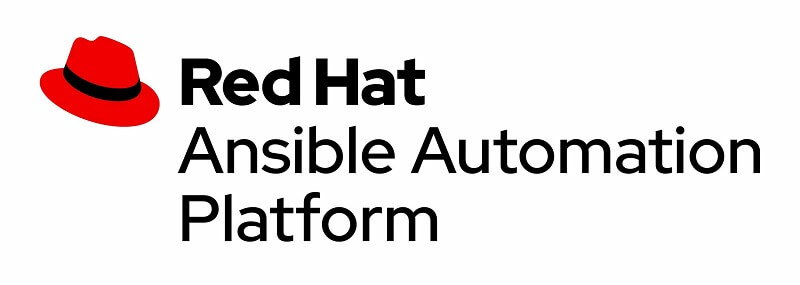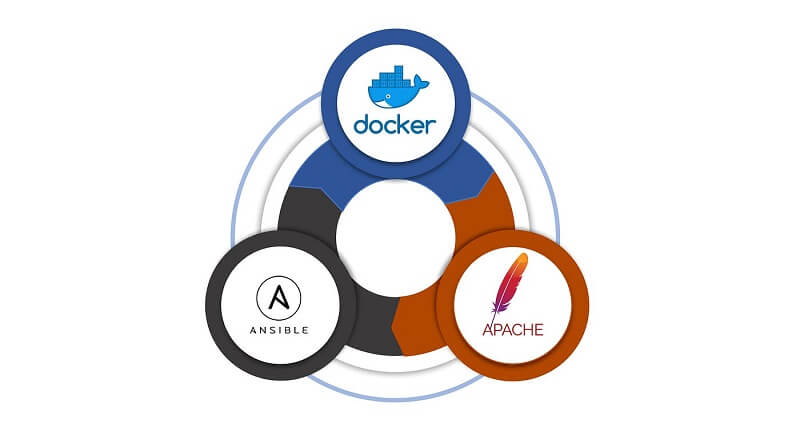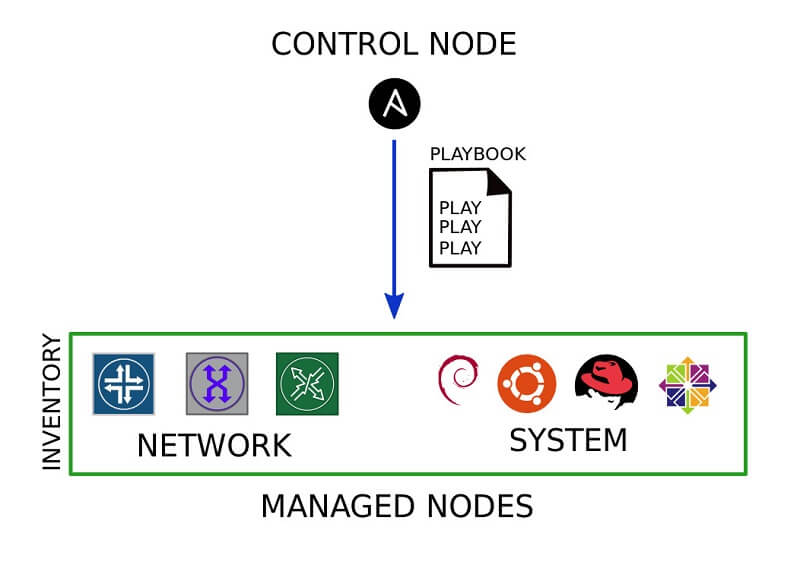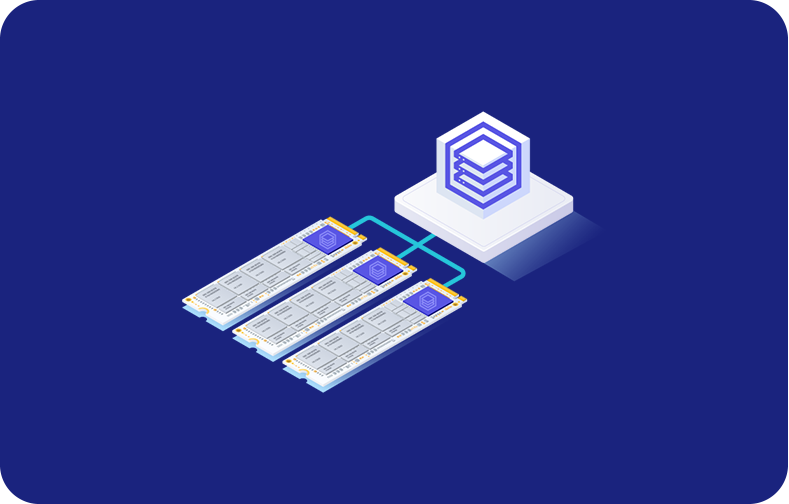Red Hat Enterprise Linux and Ansible, A Powerful Combination for Automation

Efficiency is a never-ending pursuit in the dynamic realm of technology. Then along came Ansible, an open-source powerhouse that changed the face of IT automation forever. Automate configuration management and application deployment with Ansible's user-friendly, unified platform and its straightforward, human-readable language.
Whether you are in charge of a small team or a massive data center, Ansible's powerful modules and dynamic inventory management can simplify even the most daunting jobs. Suppose Ansible was as easy to use as Red Hat Enterprise but with the same level of reliability.
Changing the face of information technology automation is the result of this potent mix, which is no longer a pipe dream but rather a reality. An environment that is nothing short of game-changing is produced when the exceptional dependability and performance of Red Hat Enterprise Linux are paired with the user-friendly automation technologies of Ansible. It is like to having a symphony orchestra at your disposal, with every component working in perfect harmony to produce a masterpiece of effectiveness and productivity.
Ansible, what is it?

Infrastructure as code can be enabled with the help of Ansible, an open-source automation tool for setting up Windows and Unix-like computers. Applications may be deployed with ease using the suite's software provisioning and configuration management features.
Agentless architecture is in use, and Windows Remote Management or SSH-based temporary remote connections enable PowerShell execution.
One of the best enterprise Linux platforms, Red Hat Enterprise, lays the groundwork for scaling up programs and releasing innovations in any cloud.
Linux administrators and developers who need to automate repetitive and error-prone processes for system provisioning, configuration, application deployment, and orchestration can enroll in Red Hat's "Red Hat Enterprise Automation with Ansible (RH294)" course.
What Function Does Ansible Perform?
Ansible is a universal solution and is the best choice for users from the IT field, as it is designed to be simple and easy to use. Here are some essential functions that the Ansible automation platform performs:
Automation Tasks: By automating routine tasks, Ansible streamlines processes and removes human error.
Configuration Management: System configurations can be managed and maintained via Ansible, which guarantees that systems are configured and working as intended.
Dynamic Ansible Inventory: Ansible employs a dynamic inventory file to handle resources, which allows it to adjust to new conditions.
Ansible Modules: Modules are short programs that Ansible employs to carry out specified tasks. They are supposed to be resource models of the desired system state.
Managed Nodes: Ansible runs on a control node to manage the other nodes in the network.
Playbooks: To specify automation tasks, Ansible makes use of playbooks written in YAML format, a primary, human-readable language.
Red Hat Integration: Ansible's seamless integration provides a robust automation platform with Red Hat Enterprise Linux.
Privilege Escalation Password: To further strengthen security, Ansible may handle passwords for privilege escalation.
The Ansible Playbooks

Ansible's automation engine revolves around Ansible Playbooks. These playbooks, written in an easy-to-understand YAML style, lay out your automation activities. One way to specify the ideal configuration for your system is with an Ansible Playbook. It defines the steps that must be taken and the correct sequence in which they should be carried out. The "plays" that make up a playbook can include anything from one activity to several.
The hosts or inventory you've designated will be the ones that playbooks run on. This implies that you can automate processes on many platforms. Every job in a playbook invokes Ansible modules. These modules are similar to little programs that carry out particular tasks.
The steps in a playbook are carried out in the specified sequence, allowing for the coordination of intricate deployments involving multiple machines. Converting infrastructure into code has never been easier than using Ansible Playbooks. Automating IT processes guarantees consistency and dependability in your environment. With Ansible Playbooks, you can automate and simplify server configuration, database management, and application deployment.
What Are the Functions of Ansible?
The Ansible automation platform offers impressive features. These features are:
Web Application Installation with Ansible

Ansible can be used to deploy web apps. Playbooks can help you set up
-
local workstations
-
configure web servers
-
install software
-
transfer files
Various types of static HTML websites and dynamic web applications can be deployed using Ansible playbooks.
The Ansible System for Managing Docker Containers

Ansible allows you to control the many stages of a Docker container's lifetime. It allows you to set up, launch, terminate, and delete Docker containers.
Automated DevOps With Ansible

Ansible is widely used in DevOps due to its potential automated IT infrastructure. It makes infrastructure as code possible and simplifies complicated IT activities. Infrastructure may be defined and managed more efficiently. It handles local workstations, device configuration, and provisioning.
Controlling Setups

Ansible is second to none for managing configurations. It can manage and maintain configurations, ensuring that systems are configured and functioning as intended. To guarantee idempotent operations, Ansible lets you specify the target state of systems and then takes care of getting them there.
Ansible for Automating Tasks
One everyday use case for Ansible is automating various IT tasks. These activities include automating mundane chores, managing setups, and easing deployments. With the help of Ansible's automation features, IT operations may be made much more efficient, faster, and scalable.
Besides the ones listed above, Ansible has a wide variety of uses, such as
-
automating the installation of packages
-
configuration of firewalls
Plus, it's multi-OS capable, meaning it can handle various operating systems, such as:
-
Windows
-
macOS
-
Linux and more
Other tools can also be integrated with Ansible.
-
Docker
-
Kubernetes
-
Jenkins
Other possible uses include:
-
Databases
-
virtual private clouds
-
subnets
-
routing tables
-
autoscaling groups
-
databases
-
three-tier architectures

Architecture of the Ansible Automation Platform
For all your automation needs in IT, the Ansible Automation Platform is the best solution. You can adjust your deployment to match your specific automation needs, and it's easy to incorporate different components. A general outline of its design is as follows:
Playbooks: Ansible's configuration, deployment, and orchestration language is called a playbook.
Module Utilities: Ansible maintains routines that numerous modules use as module utilities to minimize duplication and maintenance. This helps when multiple modules utilize the same code.
Plugins: Ansible's main functionality can be enhanced with the help of plugins.
Ansible Search Path: Ansible uses the path to locate its files.
Modules: The "Ansible modules" are scripts that Ansible sends to your nodes when you connect to them.
Inventory: All the nodes that Ansible is capable of managing are listed in the inventory.
Hosts and Networking in Ansible: Ansible operates by connecting to your nodes and pushing out small programs called "Ansible modules" to them. These programs are written to be resource models of the system's desired state.
Ansible and Cloud: Ansible can automate cloud provisioning, configuration management, and application deployments. It works with many cloud platforms, allowing you to manage and automate tasks across a wide variety of cloud environments. However, VPSserver is the best platform, offering VPS and cloud services in different locations with excellent pricing plans.
Ansible Automation Platform's essential features consist of the following:
Automated System Manager: Its user interface, Restful API, RBAC workflows, and connections with CI/CD provide the automation control plane.
Automated Network: A network that uses preexisting connections to facilitate the allocation of tasks among a large number of geographically distributed workers.
Automated Private Center: This center facilitates the sharing of automation material among developers, allowing them to work together and publish their code.
The following components make up the architecture of a typical Ansible Automation Platform deployment on Red Hat Enterprise Linux using automation mesh:
-
The automation controller and execution nodes can be linked through an optional hop node.
-
Each cluster of automation controllers has two execution nodes.
-
An automated controller cluster with two nodes
-
The automation controller and hub are linked to a single PostgreSQL database.
-
The two-node cluster of automation hubs
How Red Hat Enterprise Linux and Ansible are the Best Combinations for Automation
At this point, Red Hat Enterprise Linux is almost universally acknowledged as one of the most commonly used enterprise Linux platforms.
In contrast, Ansible can automate:
-
application deployments
-
configuration management
-
cloud provisioning
It lets you describe your automation jobs using YAML, a primary, human-readable language almost as good as plain English.
The Potential of Merging: Combining RHEL with Ansible streamlines, constructing and maintaining a stable, secure base for your apps and workloads. The reason they work so well together is as follows:
Streamlined Administration: With Ansible's agentless design, you can avoid installing extra software on your managing nodes. Only the control node requires Ansible maintenance, making system management much easier.
Flexibility in scaling: Managing thousands of servers is no problem with Ansible. Ansible carries out this by sending tiny programs called "Ansible modules" to your nodes. These code snippets represent the ideal condition of the system and its resources.
Stability and Dependability: When you automate your chores with Ansible, your systems will always be configured consistently. This makes your processes more trustworthy by eliminating the room for human error.
Security: RHEL offers a safe environment for your apps by utilizing security tools such as SELinux, which improves security and isolation. Ansible's capacity to automate configuration and security patches achieves a very secure system.
Final Thoughts
Ansible offers web application installation, Docker container management, automated DevOps, setup control, and task automation. This tool can also deploy web apps, manage Docker containers, and automate DevOps. It configures systems and ensures they work properly. Ansible blends Red Hat Enterprise Linux and easy-to-use automation technologies, making it a versatile tool for IT managers and developers. Ansible streamlines and reliably automates complicated IT processes by automating mundane activities, managing configurations, and enabling applications.
Playbooks are essential to the Ansible Automation Platform, which automates IT tasks. The platform includes a playbook for configuration, deployment, and orchestration; module utilities to reduce duplication and maintenance; plugins for enhanced functionality; an Ansible search path for file location; modules for scripts sent to nodes; an inventory for all nodes managed; hosts and networking in Ansible; and automation for cloud provisioning, configuration management, and application deployment.
Combining Ansible with Red Hat Enterprise Linux (RHEL) creates a safe, stable hybrid cloud environment. It simplifies automation job descriptions with YAML. Through SELinux, RHEL and Ansible provide easier management, scaling flexibility, stability, dependability, and security.
Frequently Asked Questions
Why would you use Ansible?
Ansible is a free and open-source platform that can configure Microsoft Windows and Unix-like systems and operates on many of them.
When it comes to Red Hat Enterprise Linux, how does Ansible integrate?
The integration of Ansible and Red Hat Enterprise Linux is faultless. It connects to servers and executes tasks using SSH. The control machine explains where your servers are located using its inventory.
What is the automation platform for Ansible?
The Ansible Automation Platform is the best framework for automating IT operations. You can tailor your deployment to match your specific automation needs, and it's easy to incorporate different components.
How does an Ansible Control Node work?
All jobs and playbooks will be executed from the Ansible Control Node, the system where Ansible is installed. The control node is an excellent place to install and configure additional servers by running processes.
How does Ansible's Playbook work?
Mechanism administrators will like Ansible Playbooks for its straightforward, repeatable, and reusable configuration management and multi-machine deployment mechanisms.
How does Ansible create an inventory?
An Ansible inventory is a list of all the nodes that Ansible can reach. The inventory file can list individual hosts and groups. You can use either the inventory file or a dynamic inventory script to get inventory data from other sources.
In what ways can Red Hat Enterprise Linux be configured to run Ansible?
The package manager yum can be used to install Ansible on Red Hat Enterprise Linux. Just type yum install ansible to install Ansible.
How do Ansible modules work?
Ansible's units of work to other machines are called Ansible modules. Modules handle the execution of system instructions and the control of system resources (such as files, packages, or services).
How may Red Hat Ansible Automation be of service to me?
Using Red Hat Ansible Automation, your team can automate processes, innovate, and solve problems more quickly. This platform offers a consistent and stable automation platform for IT operations and development.
By what means does Ansible handle node management?
Ansible manages nodes through SSH or PowerShell. A controlling machine manages the nodes over SSH. Ansible is installed on the controlling system, which acts as the central hub for the automation operations.











